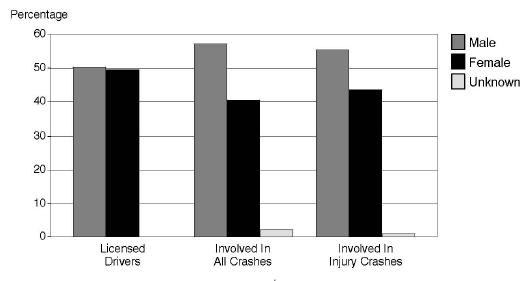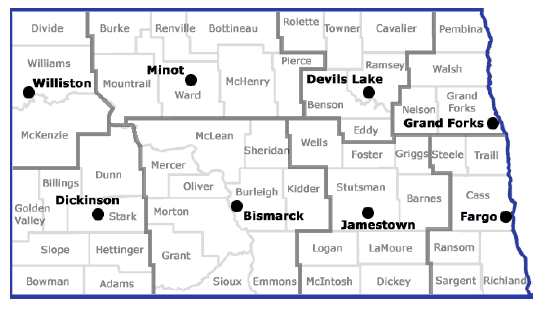MPC
Research Projects (2007-08)
Identifying Number
MPC-296
Project Title
Phase II: Driver Knowledge, Attitude, Behavior and Beliefs Focus Group: Young Male Drivers
University
North Dakota State UniversityProject Investigators
Kimberly Vachal and Tamara VanWechel
Description of Project Abstract
Traffic safety is a widespread social concern. Tackling the problem requires understanding the people who are driving. This includes information about driver behavior, but also about perceptions these drivers hold regarding their driving. North Dakota crash data points at a specific group of drivers as a problem group. Male drivers ages 18 to 34 have a high incident of crash occurrences in our state. This population is selected based on data showing the majority of crashes and crash-related fatalities occur in this population. North Dakota Traffic Trends from 2005 indicates the highest rate of vehicle crashes based on number of drivers for each age category, is highest for drivers 18-20, followed by 21-24 and then 25-34 (NDDOT, 2005). The NDDOT also shows crash involvement by sex. Although males make up half of the driving population, in 2005 they made up 57 percent of people involved in all crashes and 55 percent of involvement in injury-related crashes (see Figure 1).
Specific traffic safety issues seat belt use and impaired driving are major concerns. The answer seems simple, but the problem lies in the question, "how can we change driving behaviors to reduce or stop the resulting tragedies?" Data is needed to answer this crucial question. Engaging North Dakota drivers in traffic safety surveys and focus groups will enable while providing information that can be condensed into a tool to be used for program planning and countermeasure selection decisions. What things will give the DOT the most "bang for the buck" in traffic safety education, policies, and investment for target populations?
Figure 1. North Dakota Vehicle Crashes by Sex, 2005

Source: North Dakota Vehicle Crash Facts
Project Objectives
The objective of this project is to obtain as much information as possible regarding risky driving behaviors in male drivers ages 18 to 34. The literature shows that young adult males can be labeled "risky drivers" as a whole. The results from this project will enable the North Dakota DOT to formulate customized programs that educate drivers and positively impact behaviors to improve traffic safety. Obtaining accurate, up-to-date information assures best use of time and money invested. The knowledge gained in this research will be used to provide resources and education that is effective in traffic crash prevention, and ultimately reduction of accident fatalities and injuries to not only the target group, but for all people on the road who potentially could be affected by poor driver behavior.
Project Approach/Methods
In order to obtain detailed information regarding driving behaviors in North Dakota male drivers ages 18-34 focus groups will be administered statewide. A focus group is a discussion with a group people of similar backgrounds referring to a specific topic. The discussion is led by a group facilitator who introduces the discussion topics and assists the group in moving forward with discussion. Focus groups have limitations, but also many advantages. A main advantage is the possibility of uncovering attitudes and opinions that are hard to achieve with a simple survey. Since a facilitator is involved, any unclear responses can be clarified on the spot with follow-up questions. In addition, "they are usually well accepted by the community as they make use of the group discussion which is a form of communication found naturally in most communities" (Dawson, 1993).
Participant selection is usually done by convenience sample with the use of a screening question tool. In other words, only those people who meet specific criteria will be include in the group discussion. Each discussion should consist of 4 to 12 people and commonly take 1 to 2 hours. The discussion should focus on 2 or 3 main ideas, which in this case will revolve around impaired driving and/or seatbelt use in young, male drivers. In addition to the focus group discussion, a short questionnaire will be used to obtain further data from the participants. Data, including demographic information and perception-based questions will be included. Figure 2. shows the eight North Dakota Safe Communities regions that will be used as the geographical stratification for the focus groups.
Figure 2. North Dakota Safe Community Regions

Source: http://www.nd.gov/humanservices/
Contributions/Potential Applications of Research
Coordinate with NDDOT to collect statewide data on driver knowledge, attitude, behavior and beliefs regarding specific traffic safety issues and use this information for program and countermeasure decisions. Ultimately, this information will be used to reduce traffic fatalities, injuries, and crashes overall.
Technology Transfer Activities
An MPC report providing a summary of regional and statewide findings. Also, a process output outline for obtaining detailed data from risky driver groups, which potentially could be used for future traffic safety projects by the North Dakota DOT or other state DOTs.
Time Duration
July 1, 2007 - June 30, 2008
Yearly and Total Project Cost
$45,053
TRB Keywords
Traffic safety, driver behavior, seatbelt use, impaired driving, risky drivers, vehicle crash factors

